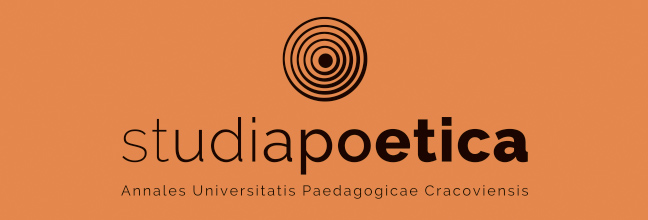Bitwa pod Grunwaldem w polskich podręcznikach do historii
Main Article Content
Abstrakt
The picture of the battle of Grunwald presented in the Polish history textbooks, from those published during the partitions through the interwar textbooks to the post-war ones and
those used after the educational reform in 1999 was changing. Each of those periods was characterised by a particular approach to the battle as it was attempted to make use of the
history for the needs of the current politics. That is why the events of 1409-1411, although unambiguously interpreted as a great victory, had an undercurrent depending on the planned
and expected effects of the message. Teaching as well as learning is based mainly on words, that is why textbooks play such an important role in those processes. Textbooks as information carriers reaching wide audiences are perfectly suitable for the purpose of creating the past
according to the needs of the current political situation. Textbooks published during the partitions focused mainly on the victories of the Polish army and on those decisions of the
Polish rulers and commanders which contributed to the increase of the country’s power. The Teutonic Order was identified with Prussia - one of the powers involved in the partitions.
The germanisation period contributed to associating it with the Third Reich. That is why Poles willingly cast their minds back to the glorious pictures of the past victories over the contemporary oppressor. When the longed-for freedom came the history textbooks were not altered in any major way. The positive moments in the history of our country were emphasised, this time in order to remind those who were born under the foreign ruling that they should double they effort to unite the brutally torn country. This idea was interrupted by the outburst of another world conflict. Its aftermath, namely the annexation of Poland
into the Eastern Bloc, had long-lasting consequences. The authority imposed by the Soviet Union attempted to create an anti-western and anti-imperial myth of Grunwald. The battle
was depicted as an example of a Slavic brotherhood of blood and the victory of the nations of the Soviet Union over Germany - an enemy of time immemorial identified with the Teutonic
Order. In the textbooks published after 1989 we will not find the identification of the Teutonic Order with Germany. The authors usually show the holistic European background of the battle
of Grunwald pointing out that the victory had wide repercussions on the international arena and its consequences had an immense influence on the 14th-century Europe. The power of
the Jagiellonian country increased as it took the helm of the old continent’s politics for a long time while the influence of the Teutonic Order decreased. The analysis of the Polish history
textbooks suggests that the battle of Grunwald was, and still is, an event of which Poles are proud and as such occupies special space on the textbooks’ pages.
those used after the educational reform in 1999 was changing. Each of those periods was characterised by a particular approach to the battle as it was attempted to make use of the
history for the needs of the current politics. That is why the events of 1409-1411, although unambiguously interpreted as a great victory, had an undercurrent depending on the planned
and expected effects of the message. Teaching as well as learning is based mainly on words, that is why textbooks play such an important role in those processes. Textbooks as information carriers reaching wide audiences are perfectly suitable for the purpose of creating the past
according to the needs of the current political situation. Textbooks published during the partitions focused mainly on the victories of the Polish army and on those decisions of the
Polish rulers and commanders which contributed to the increase of the country’s power. The Teutonic Order was identified with Prussia - one of the powers involved in the partitions.
The germanisation period contributed to associating it with the Third Reich. That is why Poles willingly cast their minds back to the glorious pictures of the past victories over the contemporary oppressor. When the longed-for freedom came the history textbooks were not altered in any major way. The positive moments in the history of our country were emphasised, this time in order to remind those who were born under the foreign ruling that they should double they effort to unite the brutally torn country. This idea was interrupted by the outburst of another world conflict. Its aftermath, namely the annexation of Poland
into the Eastern Bloc, had long-lasting consequences. The authority imposed by the Soviet Union attempted to create an anti-western and anti-imperial myth of Grunwald. The battle
was depicted as an example of a Slavic brotherhood of blood and the victory of the nations of the Soviet Union over Germany - an enemy of time immemorial identified with the Teutonic
Order. In the textbooks published after 1989 we will not find the identification of the Teutonic Order with Germany. The authors usually show the holistic European background of the battle
of Grunwald pointing out that the victory had wide repercussions on the international arena and its consequences had an immense influence on the 14th-century Europe. The power of
the Jagiellonian country increased as it took the helm of the old continent’s politics for a long time while the influence of the Teutonic Order decreased. The analysis of the Polish history
textbooks suggests that the battle of Grunwald was, and still is, an event of which Poles are proud and as such occupies special space on the textbooks’ pages.
Article Details
Jak cytować
Chłosta-Sikorska, A. (2015). Bitwa pod Grunwaldem w polskich podręcznikach do historii. Res Gestae. Czasopismo Historyczne, 11, 147–169. Pobrano z https://resgestae.uken.krakow.pl/article/view/1866
Dział
Artykuły
|
